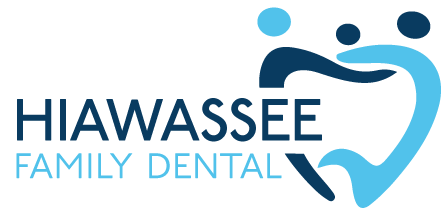
26 Mar Should I Still Get Braces as an Adult?
Maybe your parents didn’t have the money when you were a kid. Maybe you just never went to see an orthodontist. Or maybe you had braces, but they didn’t do the trick. Whatever the reason, if you’re an adult and you find yourself with crooked, misaligned, or otherwise imperfect teeth, it may be that it’s time to consider braces once again.
A Few Disclaimers
Before we dive in, it’s important that we’re up front about the reality of getting braces as an adult. It’s true—you’re not in high school anymore. Your bones are done growing, which means, first of all, that the treatment will take longer to work than it would have when you were younger.
You see, braces work by applying pressure to the teeth in the correct direction. For a child, whose jaw structure is still developing, the mouth can adapt quickly to this pressure, and they can often get their braces off in a matter of months. But for adults, whose bone structure has solidified, braces will take longer to do their job. The average treatment time for adults is about two years. That doesn’t mean they won’t be effective, though. Your teeth are always shifting throughout your lifetime, meaning that they can always respond to the correction of braces.
You may also need to have restoration work (such as a crown or a root canal) done prior to your braces being applied. When you consult with your orthodontist, they’ll discuss with you whether this is necessary.
Finally, you may feel self-conscious about wearing braces as an adult. This is understandable. However, we’ll address later both more discreet options, as well as why it may be worth the discomfort for the sake of the cosmetic and oral health benefits that braces provide.
Braces are for (Most) Everyone
To address the main question of today, no, you’re not too old. Dr. Ko is an orthodontist with the Ohio State College of Dentistry, and he says he has patients in their seventies and eighties! In his words, “As long as you’re healthy, there’s no age limit for braces.” There are some conditions that might make orthodontists hesitate to prescribe braces. These would include things like diabetes and osteoporosis. Another concern is if you simply don’t have the bone remaining to sustain braces.
As discussed earlier, the way braces work is by applying pressure on your teeth to shift them in the desired direction. Your bones dissolve and reform over time to mold to that new shape. As you age, however, the gums naturally recede, and the bones shrink. If the bones holding your teeth in place have worn away too much, you may not be a good candidate for braces.
Aside from these few special circumstances, most anyone is qualified for braces. If you are interested in braces as an adult, the first step is to schedule an appointment with an orthodontist. They will discuss your options with you, including cost, expected length of treatment, and your various treatment options!
Braces Come in All Shapes and Sizes
Remember when we said earlier there were more discreet options out there? You don’t have to sport the chunky, silver mouthful of wire that made your classmates call kids Metal Mouth in fourth grade. Let’s look at some of the options.
Traditional Metal
While they may have been chunky and highly noticeable back in fourth grade, the braces of today are much slimmer and more efficient. They are the most popular option, the most widely used, and typically the most affordable. Teens usually opt for elastic ties in bright, neon colors, but you can opt for natural tones if you prefer. Metal braces have stood the test of time as they have proven highly effective.
Ceramic
For those who want a discreet look, yet don’t think Invisalign or other braces alternatives are the best fit for them, ceramic braces are often their first choice. These operate like metal braces, but are made from clear, tooth-colored material. Keep in mind, however, that they can stain if not cared for diligently.
Lingual Braces
Lingual braces are normal braces, made up of all the same components—they’re just applied to the opposite side of your teeth (by the tongue, hence the name lingual)! They are nearly invisible, which can be a very appealing benefit to those looking for orthodontic treatment later in life. However, these are the most expensive of the four options discussed here, ranging from $5,000 to $13,000. You may also experience discomfort with the brackets rubbing against your tongue or develop a lisp.
Clear Aligners
Ranging from $3,000 to $8,000, clear aligners such as Invisalign are not as pricy as lingual braces, but still provide the advantage of concealed treatment. Many patients also appreciate them due to the easy removal for brushing and flossing and the fact that they might not require as many appointments as traditional braces. Clear aligners are great options for adults seeking to have their teeth straightened; you may just have to be prepared for it to take longer than traditional braces might, and for orthodontic problems.
Keep in mind that this is not an exhaustive list of all teeth-straightening options. Speak to your orthodontist about which would be the best fit for your individual situation.
Why Bother?
At this point, you may be thinking that braces sound like one big mess of expensive, uncomfortable, and time-consuming. Why pour your money into them when you’ve gotten this far without them?
While that’s a fair question, the fact that you’re reading this article tells us that you already sense your need for straight teeth. It’s not something to feel bad about! You may feel like wanting your teeth straightened at this point in life is just vanity, and there are better things to do with your time and money, but that’s not necessarily true. Let’s take a moment to consider the benefits that braces provide, even for adults.
First of all, as you’re likely well aware, braces do provide a cosmetic benefit. For those with crooked, gap-toothed, or otherwise unconventional smiles, straightened teeth can provide a major confidence boost. Your smile is going to be yours for the rest of your life—it’s worth some investment to feel comfortable with it.
Secondarily, and just as important, there are health benefits associated with undergoing braces treatment. As Harvard Health explains,
“Crowded or overlapping teeth can be difficult to clean, making tooth decay and gum disease more likely. Teeth that don’t come together properly when you close your jaws—a problem called ‘malocclusion,’ or ‘bad bite’—can cause chewing and swallowing problems. Poor tooth alignment can also make it difficult to pronounce certain sounds and can put excessive stress on the chewing muscles, causing facial pain.”
These are all legitimate orthodontic problems that braces correct, including in adults.
We can help!
If you’re feeling like braces would be nice but aren’t really worth the trouble, speak to an orthodontist before making a final call. They may encourage you to have them because of trouble that your crowded or misaligned teeth could cause down the road. If you have questions or concerns about your teeth, please reach out to a dentist or orthodontist today! It’s never too late.
Dr. Hargrove is pleased to offer clear aligners as a great alternative to traditional braces. Schedule a consult today!

About Our Team
Dr. Hargrove and our excellent team here at Hiawassee Family Dental have over 30 years of experience in the field of dentistry. We’re passionate about superior patient care and education.
Contact us to schedule your next appointment!


Sorry, the comment form is closed at this time.